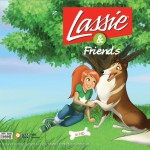DQ Entertainment (International) Limited (DQ) is coming out with its IPO which opens on Monday the 8th of March and closes on the 10th March. The company completed its anchor investor allocation on Friday. It may also be mentioned that the company had done a pre-IPO allocation of 37.73 lakh shares at a price of Rs 68.11 which is a discount of Rs 11.89 or 14.86% over the upper price band. This allocation happened just two months ago.
 |
 |
 |
| Number of Shares | 1,60,48,011 equity shares |
| Price Band | Rs 75-80 |
| Issue size | Rs 120.36 crs to 128.38 crs |
| Employee Reservation | 3,21,011 equity shares |
| Net offer | 1,57,27,000 equity shares |
| QIB’s | 94,36,200 equity shares including anchor investors 28,30,860 shares |
| Non Institutional Investors | 15,72,700 equity shares |
| Retail Investors | 47,18,100 equity shares |
| Equity Shares outstanding post issue | 4,95,00,000 equity shares |
| Marketcap post issue | Rs 594.62 crs to 634.26 crs |
| Book Running Lead Manager | SBI Capital Markets Limited |
| Syndicate Member | India infoline Limited |
| Yes Bank Limited | |
| Isssue Opening Date | Monday 8th March |
| Isssue closing date | Wednesday 10th March |
| IPO Grade | 3/5 by Fitch indicating average fundamentals |
| Bidding lot size | 80 equity shares |
| Pre-IPO allotment | 37,72,771 equity shares to IDFC and other investors at Rs 68.11 per share |
Business
 DQ is one of the leading producers of animation, visual effects, game art and entertainment content for the Indian as well as global media and entertainment industry. DQ is a producer of animation videos and creator of game art. The company has forayed into production and distribution of live action television and feature films. DQ has an asset base of over 350 hours of animation content from which the company earns revenues through licensing and distribution activities.
DQ is one of the leading producers of animation, visual effects, game art and entertainment content for the Indian as well as global media and entertainment industry. DQ is a producer of animation videos and creator of game art. The company has forayed into production and distribution of live action television and feature films. DQ has an asset base of over 350 hours of animation content from which the company earns revenues through licensing and distribution activities.
The company has established an in-house training centre to train production staff to deliver the high quality animation productions to European and North American clients. The company has over 2800 employees who form the creative talent of the company. It also has proprietary IT and software which allows it to produce between 20-22 TV series, movies or other programs simultaneously. The company has ten locations in India but is a predominantly Hyderabad based company. It has over ninety clients or partners spread across the globe and some marquee clients include Disney group, Nickelodeon, BBC, Australian Broadcasting Corporation and NBC Universal.
In terms of content the company started with the traditional 2D animation studio, moved up to 2D digital and now moved up to the latest 3D animation production. The company is also developing content for games which has become a very high source of revenue. The company is developing its own IP (intellectual property) in the form of “Jungle Book”, which is a 3D CGI (computer graphic imagery) television series.
The company has two divisions namely production and licensing and distribution. Once its own productions hit the screen like Jungle Book, the revenue from licensing and merchandising will take a quantum jump and help in increasing the bottom line. The company follows a low risk business model where it does pure service in the form of producing content for others and gets paid for the work done. In the other activity it does co-productions with others either as a minor partner or a major partner. The key factor which helps the company to de-risk in the co-production model is that the production costs are separately tied up and until 80% of the costs are not committed, actual production does not commence.
Financials
The company had revenues of Rs 94.57 crs for the year ended March 2008, Rs 150.91 crs for the year ended March 2009 and Rs 69.01 crs for the half year ended September 2009. Profit after tax for the same period were Rs 7 crs for the year ended March 2008, Rs 16.09 crs for the year ended March 2009 and Rs 10.26 crs for the half year ended September 2009. The company follows a different policy in regards to depreciation. It writes off its hardware like computers etc in three years and its Intellectual property rights in ten years. Therefore if one was to notice the depreciation for March 2008 was Rs 12.73 crs, for March 2009 was Rs 28.22 crs and for the half year ended September 2009 was Rs 12.21 crs.
The company has capitalised its reserves and issued bonus shares in a very liberal manner of 40 shares for every share held in September 2009. The equity capital of the company pre-IPO was 6.323 cr shares. The EPS of the company based on this equity was Rs 1.1 for the year ended March 2008, Rs 2.54 for the year ended March 2009 and Rs 3.25 on half yearly annualised basis based on September 2009 figures.
If one were to talk about fully diluted earnings and base the earnings per share on the equity capital of 7.93 cr shares, the EPS would change to Rs 0.88 for March 2008, Rs 2.03 for March 2009 and Rs 2.59 for the half year on an annualised basis for September 2009. The price earnings multiple for the same at the lower and higher price band based on half year ended September 2009 annualised numbers would be 28.96 times to 30.89 times.
Objects of the issue
| Investment in co-production agreements focusing on IP content creation | 54.96 crs |
| Development of office premises and production facilities; Development of Infrastructure and additional facilities at the SEZ unit | 39.23 crs |
| Investment in the subsidiary DQ Entertainment (Ireland) Limited | 12.92 crs |
| General Corporate Purposes | X |
Comparison
The listed players in this business include primarily Crest Animation Studios Limited. Not absolutely comparable but in a similar activity is UTV Software Communications Limited. Balaji Telefilms can also be compared as they are in the production of serials or content for television. However except Crest the comparison is only for name sake. The company stands out well in comparison to its peers in terms of business model, opportunity to grow, clients, content etc. Crest has not made profits for some time now hence it is not comparable on earnings etc.
If we try to look overseas for comparison it doesn’t help much either as the sheer size of the company is far smaller than listed entities overseas or they are into many more activities.
Risks
The company is in the process of building and releasing its first mega Intellectual property. Licensing and merchandising forms a subsequent revenue stream from such activities and most importantly is a regular form of income for subsequent years thereafter. The success of the film is of great importance and therefore the future depends a great deal on the acceptance of the same. The latest in technology is today 3D and as has been seen in the case of technology it can age very fast.
Animation is primarily targeted at the younger generation and their choice or liking has been found to change without notice. This can be a risk. One must also remember that re-runs are always a great hit with people and how many of us still love watching Tom and Jerry cartoons.
Conclusion
The company DQ is in a fast growing industry which has a great future. The company needs to build on its already large library of 350 hours and grow the same at a rapid pace. Based on current valuations there is nothing left on the table for the investor as the valuations are stretched. On the flip side animation companies should be looked at a little longer period. The first major property from DQ would be Jungle Book and the release of that would happen in the next few quarters. Revenue from this would flow in 2011-2012 and is likely to contribute substantially to the topline and bottom line of the company. Secondly merchandising and licensing revenue from the same would also flow and most importantly would flow for a number of years thereafter.
Considering the fact that an issue from this sector which is fast growing and we have not seen an issue from this sector would see a lot of hype being created about the issue. As mentioned earlier the issue is expensive and would need a really large over-subscription to make gains on listing. I believe one should look at subscribing to this issue only if one is a long term investor and has the patience to hold on for atleast twelve to eighteen months to realise the true potential of the company.
If however one is looking only at listing gains look at the over-subscription on Wednesday afternoon and looking at the same take a call. Please also remember that in the recent case of ARSS Infrastructure, even retail investors had to go through a lottery process.
In conclusion apply with a longer term of holding in mind and even though listing gains maybe there look to add into the share on dips post listing.
SEBI disclaimer: – I intend to subscribe to the issue


